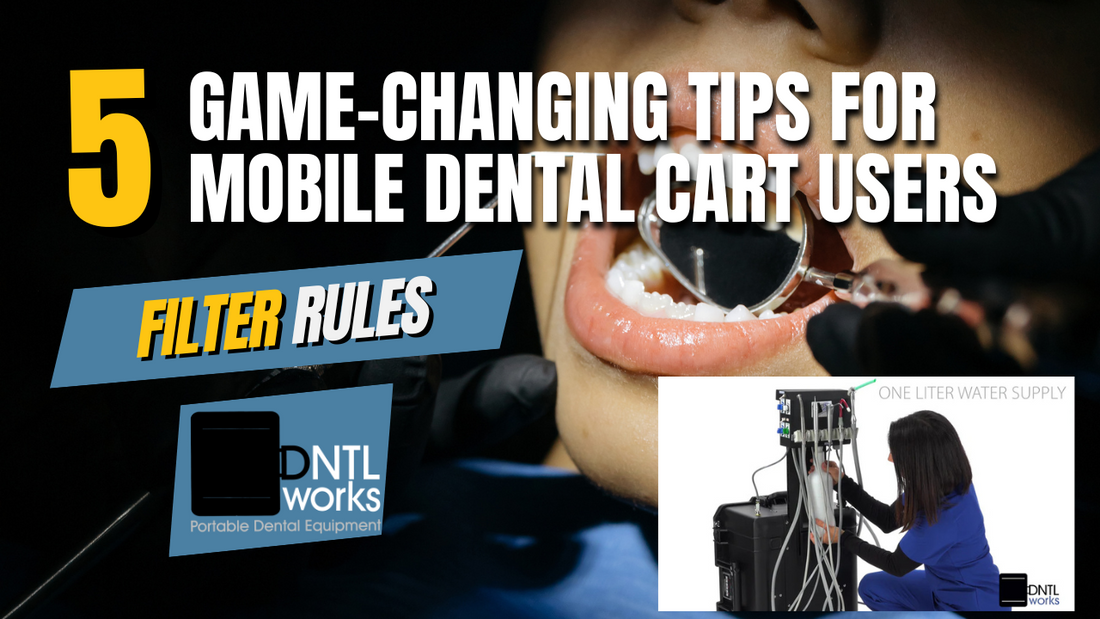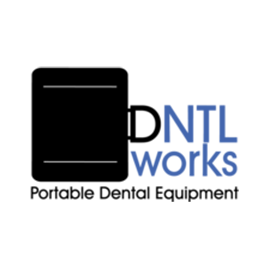
Mastering Mobile Dentistry: Essential Tips for Getting the Most from Your Dental Cart
Share
In the evolving landscape of dental care, mobile dentistry has become increasingly vital for reaching patients and providing care where it's needed most. Whether you're using a ProSolo, ProSeal, or any other mobile dental cart, these expert tips will help you maximize efficiency, prevent common issues, and ensure consistent performance in any setting.
1. The Power of Proper Power Management
The foundation of reliable mobile dental care starts with understanding and managing your power supply. Many practitioners learn this lesson the hard way when their equipment unexpectedly fails or underperforms due to power issues.
Understanding Voltage Requirements
Your mobile dental cart is precisely calibrated to operate within specific voltage parameters. Even minor fluctuations can impact performance and potentially damage expensive components. Here's how to master your power setup:
- Always Test First: Invest in a quality voltage tester and check every outlet before connecting your equipment. Look for consistent readings between 110-120V for standard US equipment.
-
Location Mapping: Create a "power map" of your regular locations:
- Document tested outlets
- Note any problematic circuits
- Mark optimal setup locations
- Record any special requirements
Power Protection Strategies
- Install a medical-grade surge protector
- Consider a portable UPS for critical procedures
- Use dedicated circuits when possible
- Avoid sharing circuits with high-draw appliances
2. The Three-Filter System: A Game-Changing Approach
Proper filtration is crucial for maintaining suction power and preventing system damage. The Three-Filter System has become the gold standard for mobile dental practitioners.
Implementing the System
-
Active Filter
- Currently in use
- Monitored throughout the day
- Cleaned between patients as needed
-
Ready Reserve
- Fully cleaned and dried
- Easily accessible
- Pre-checked for integrity
-
Processing Filter
- Undergoing thorough cleaning
- Drying completely
- Being prepared for rotation
Filter Maintenance Protocol
- Clean filters with enzymatic cleaner daily
- Inspect for damage or wear weekly
- Replace filters every 3-6 months
- Document filter rotation and replacement
3. Strategic Water Management: The Lifeblood of Your System
Water management in mobile dental units requires a proactive approach to prevent biofilm formation and ensure consistent performance.
Daily Water Protocol
-
Morning Setup
- Flush lines with fresh water for 2 minutes
- Add appropriate water treatment tablets
- Test water flow rates
- Document water quality checks
-
During Operations
- Monitor water levels regularly
- Maintain proper water temperature
- Check for consistent flow
- Address any unusual odors immediately
-
End of Day
- Empty all water reservoirs completely
- Run air through lines for 2 minutes
- Clean water filters
- Prepare fresh water for next day
Preventing Biofilm Formation
- Use only distilled water
- Implement regular shock treatments
- Monitor water quality weekly
- Replace water lines according to schedule
4. Building the Ultimate Mobile Maintenance Kit
A well-stocked maintenance kit can mean the difference between a minor hiccup and a cancelled day of procedures.
Essential Components
Mechanical Items
- Complete O-ring set
- Basic tool kit (screwdrivers, pliers, adjustable wrench)
- Spare suction tips (various sizes)
- Extra tubing sections
- Pressure gauge
- Voltage tester
Cleaning Supplies
- Enzymatic cleaner packets
- Surface disinfectant wipes
- Water line treatment tablets
- Small bottle of lubricant
- Microfiber cloths
Documentation
- Equipment manuals
- Maintenance logs
- Contact information for technical support
- Quick reference guides
Organizing Your Kit
- Use clear, labeled containers
- Keep items in waterproof packaging
- Regular inventory checks
- Replace used items promptly
5. The 15-Minute Morning Mastery Routine
A consistent morning setup routine is crucial for preventing issues and ensuring optimal performance throughout the day.
First 5 Minutes: System Integrity Check
- Inspect all external components
- Check for loose connections
- Verify power supply
- Test basic functions
Middle 5 Minutes: Water System Preparation
- Fill reservoir with fresh distilled water
- Add water treatment tablets
- Flush all water lines
- Check for proper flow and pressure
Final 5 Minutes: Suction and Pressure Testing
- Test HVE and saliva ejector
- Verify pressure readings
- Check filter condition
- Document all readings
Additional Best Practices for Mobile Success
Location Setup Strategy
- Scout locations in advance when possible
- Create setup diagrams for regular locations
- Document special requirements
- Maintain location-specific checklists
Environmental Considerations
- Monitor room temperature
- Ensure adequate ventilation
- Check lighting conditions
- Verify workspace cleanliness
Patient Flow Optimization
- Organize instruments for efficiency
- Maintain clear walkways
- Position equipment strategically
- Plan for emergency access
Conclusion
Success in mobile dentistry requires more than just clinical expertise – it demands a thorough understanding of your equipment and a commitment to proper maintenance and operation. By implementing these tips and developing consistent routines, you can ensure reliable performance and focus on what matters most: providing excellent patient care.
Remember that these guidelines should be adapted to your specific equipment and circumstances. Always consult your equipment's manual and manufacturer recommendations for detailed specifications and requirements.
Pro Tip: Create a digital version of your maintenance logs and procedures. This makes it easier to track patterns, anticipate needs, and maintain proper documentation for compliance purposes.
